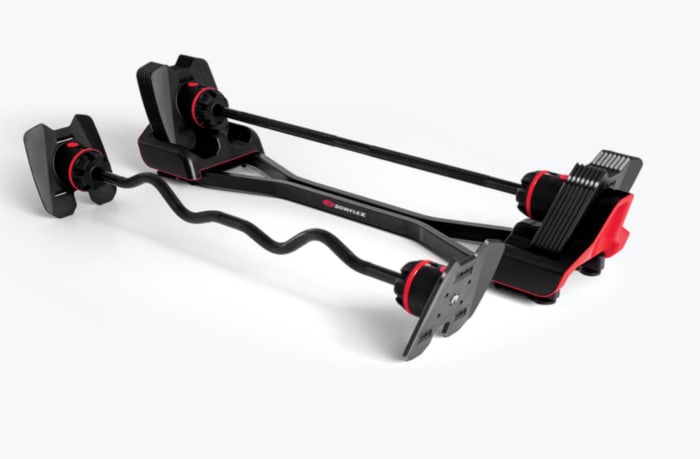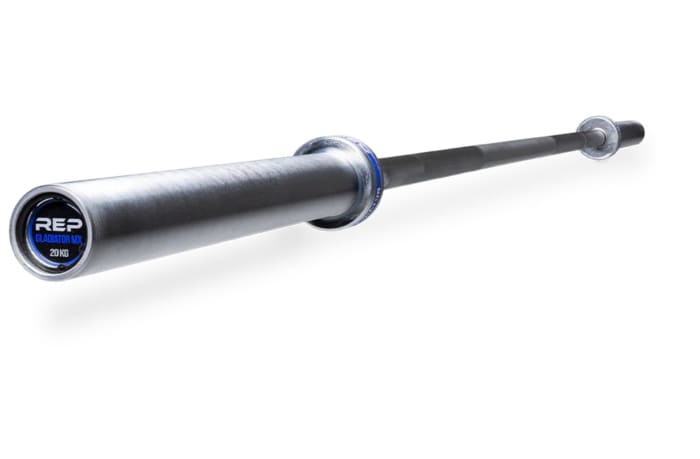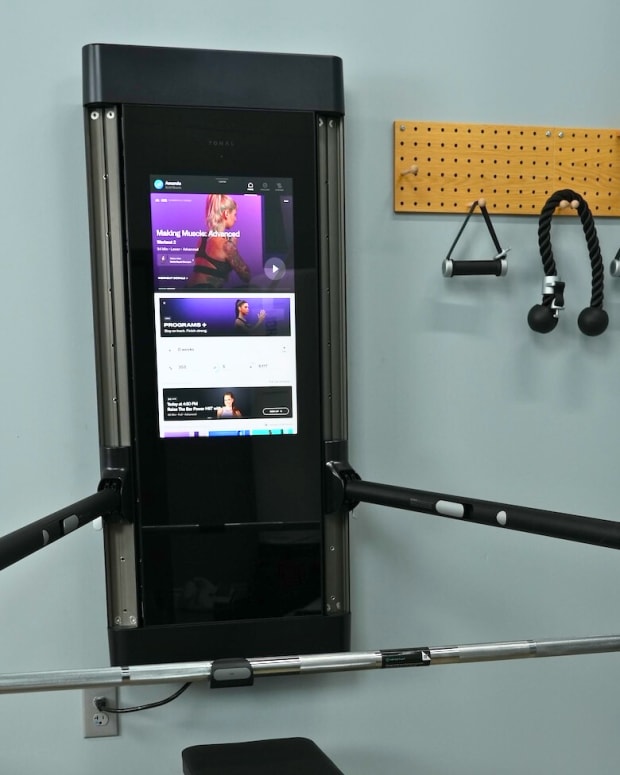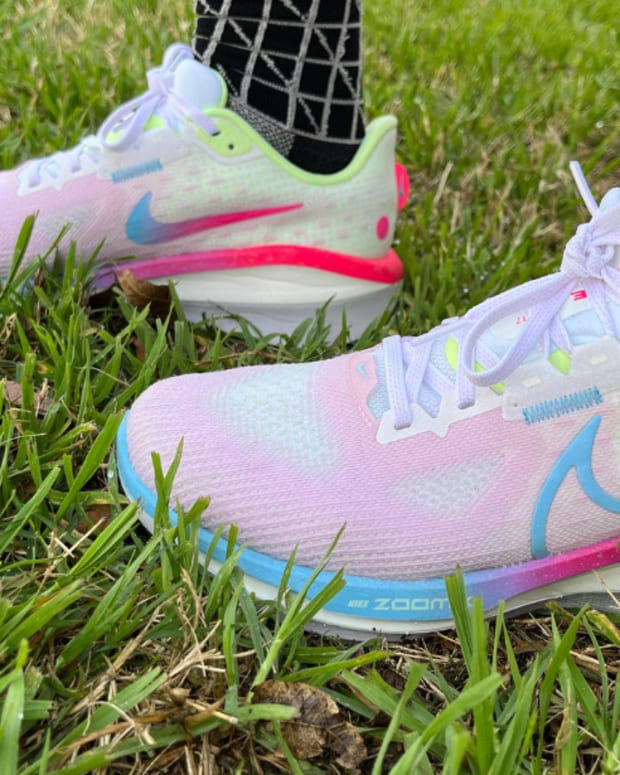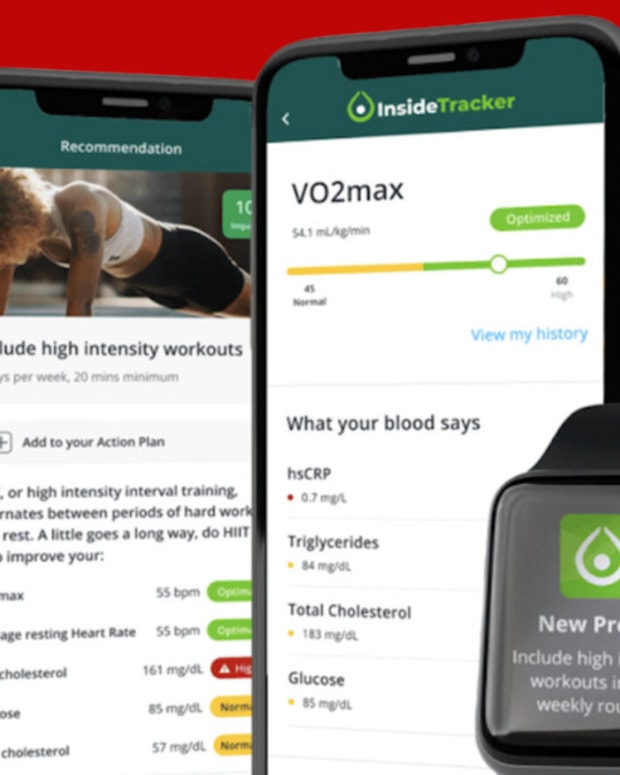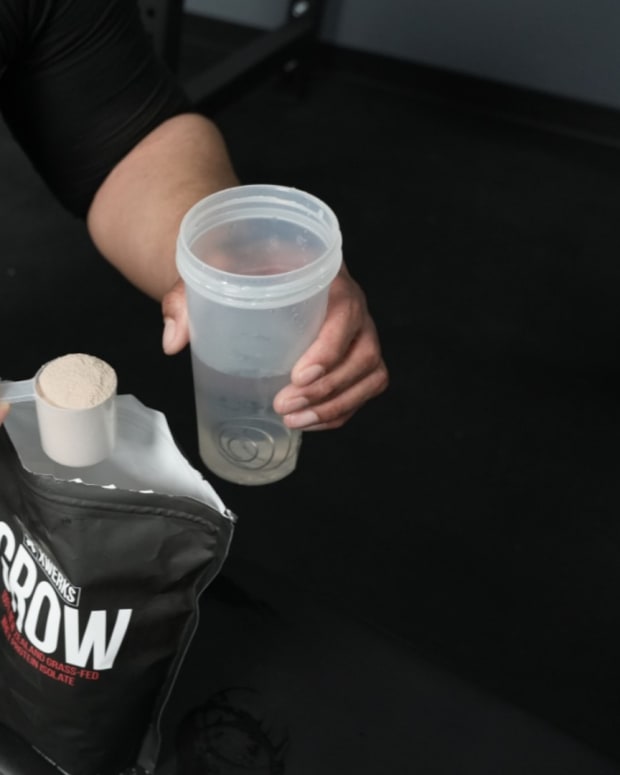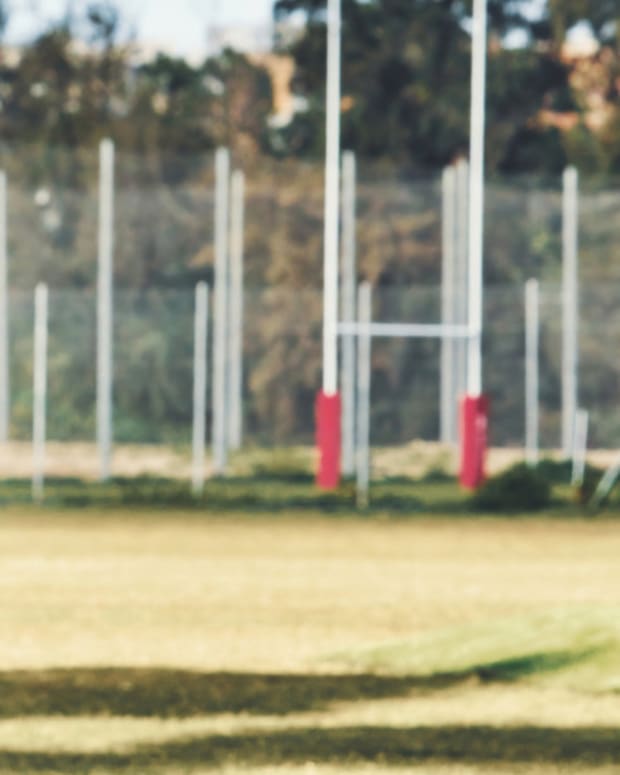The products featured in this article have been independently reviewed. When you buy something through the retail links on this page, we may earn commission at no cost to you, the reader. Sports Illustrated editorial staff are not involved in the creation of this content. Learn more here.
If you’re a fan of strength training with free weights, you’re probably familiar with EZ curl bars and straight bars. As standard strength training equipment choices for bicep curls and tricep extensions, among other popular upper body exercises, these two barbells are each loved by lifters for different reasons. Like all gym equipment, however, EZ curl bars and straight bars come with perks and drawbacks. As for which barbell is right for you, it ultimately depends on your fitness goals, fitness level and which weightlifting position feels most comfortable to you.
Whether you’re a beginner lifter or a strength training pro, adding an EZ curl bar or straight bar to your home gym is a solid investment for building muscle. In fact, research shows that training with barbells over dumbbells results in greater forearm and bicep activation, making these bars a staple for upper body workout routines. If you’re shopping for a new barbell for bicep workouts and beyond, our EZ curl bar versus straight bar guide can help you determine which bar is best for your needs. Keep reading for a side-by-side comparison and our favorite barbells currently on the market.
What Is an EZ Bar?
An EZ curl bar, or a curl bar, is a type of barbell with a W-shaped grip. These barbells get the “EZ” name because the W-shaped design offers a more neutral (or semi-supinated) grip that takes stress off of your wrists, making them a comfortable option for beginner lifters and people with wrist pain or limited wrist mobility. EZ bars weigh less than straight bars, and are also a better option for people who don’t plan on lifting very heavy weight loads. On each end of the curl bar you’ll find straight rods, or loadable sleeves, for weight plates and barbell collars.
What Is a Straight Bar?
A straight bar is exactly as it sounds: a straight barbell. Unlike the EZ curl bar’s W-shaped grip, this barbell is free of bends and curves, and is cylindrical with a straight shape. It's also usually heavier than a curl bar (weighing on average 45 pounds versus the curl bar’s 25 to 30 pounds). Like the EZ curl bar, you’ll also find straight rods on each end for loading weight plates. While the supinated grip that straight bars promote results in greater bicep activation, this creates greater risk of injury, since the bar is heavier and weights are further from your body, which requires more balance. Therefore, proper form is essential for straight bar exercises.
Key Differences
- Hand positioning: Neutral or semi-supinated grip for EZ bars and supinated grip for straight bars
- Weight and shape: 25-30 pounds and W shape for EZ bars and 45 pounds and cylindrical shape for straight bars
- Muscle activation: Greater brachialis and brachioradialis (forearm) activation for EZ bars and greater biceps brachii activation for straight bars
- Range of motion: Greater range of motion for EZ bars and less range of motion for straight bars
- Risk of injury: Less risk of injury for EZ bars and greater risk of injury for straight bars
- Wrist impact: Less wrist impact for EZ bars and more wrist impact for straight bars
Key Similarities
- Similar movements: You’ll use the bars the same way, but with slightly different grips
- Primarily target biceps: Both bars activate the biceps brachii muscles
- Popular for bicep curls: Both are standard weightlifting bars for this exercise
- Effective for tricep workouts: Both bars can be used for tricep extensions
Benefits of an EZ Bar
There are numerous reasons why you might want to choose an EZ curl bar over a straight bar. Thanks to the cambered W-shape, you can complete bicep curls and other upper arm workouts with a more neutral grip, which is better for injuries or mobility concerns. The zig-zag shape also creates greater range of motion that allows you to fully contract your biceps because you’ll be able to move your hands closer to your body than you would while using a straight bar. With a close grip, you also won’t need to use as much balance to keep the EZ curl bar steady. Another benefit that EZ bars offer is greater activation of the brachialis and brachioradialis (forearm) muscle groups.
Benefits of a Straight Bar
Straight bars come with several advantages, the biggest of which is that they force your hands into a supinated position, or a position where your forearms are facing up. The full supination activates your biceps brachii and allows you to activate both functions of the biceps. This boosts muscle engagement, which many people believe increases muscle hypertrophy, or the process of muscle growth (ultimately leading to larger bicep muscle). Straight bars are also easier to load with heavy weights, help teach proper form and build grip strength for weight training.
Downsides of an EZ Bar
EZ curl bars may be gentler on your wrists, but with the comfort comes a few drawbacks. Without the supinated grip that straight bars force, you’ll have a semi-supinated position that may not isolate your biceps brachii as well as the straight bar counterparts. EZ bars are also more difficult to load with heavy weight and weigh less in general, which can be a detriment to muscle growth since training with the right intensity is essential for muscle hypertrophy.
Downsides of a Straight Bar
There are several downsides of using a straight bar, the first of which is that straight bars offer less range of motion than EZ curl bars. With the bar further away from your body, it could get in the way and prevent you from fully contracting your biceps as it gets closer to your torso area; as a result, this could reduce muscle activation. Straight bars also require much more balance than EZ curl bars, and therefore have a greater risk of injury, in addition to potentially causing more wrist pain or discomfort. You also won’t get as much activation of the brachialis and brachioradialis (forearm) muscles.
EZ Bar vs Straight Bar: Common Exercises
You can do many different exercises with EZ curl bars and straight bars, some of which overlap. Here are common exercises that lifters use each barbell for.
The EZ curl bar offers more exercise versatility compared to a straight bar. It can be used for standard bicep curls, preacher curls (for which you may want to purchase a preacher bench), lying tricep extensions, close grip curls, upright rows, bent over rows, skull crushers, hip thrusts and lying pullovers. Other exercises include close grip bench presses and push presses.
A straight bar can be used for slightly fewer movements. These include straight barbell curls, rack pulls, back and front squats, bench presses, bent over rows, push presses and hip thrusts.
EZ Bar vs Straight Bar: Muscles Targeted
EZ bars and straight bars target similar muscle groups, yet each bar activates certain muscles more.
EZ bar muscles targeted
EZ curl bars primarily target the short head of the biceps brachii. Secondary muscles activated include the long head of the biceps brachii, brachioradialis (part of the forearm), brachialis (part of the forearm), deltoid (part of the shoulder), wrist extensor muscles, wrist flexion muscles and forearm flexors. EZ curl bars offer more activation of brachioradialis and brachialis muscle groups than straight bars, which may make them more effective for building forearm muscles.
Straight bar muscles targeted
Like EZ curl bars, straight bars primarily target the short head of the biceps brachii. Secondary muscles used include the long head of the biceps brachii, brachioradialis, brachialis, deltoid, wrist extensor muscles, wrist flexion muscles and forearm flexors. The straight bar’s ability to greatly activate both functions of the biceps brachii leads many bodybuilding enthusiasts to believe the straight bar is more effective for building bicep muscle than an EZ curl bar.
EZ Bar vs Straight Bar: Form Mistakes
Using the right form when weightlifting is essential to preventing injuries. These are the most common form mistakes that lifters make when using EZ curl bars versus straight bars.
EZ bar form mistakes
The key to proper form with an EZ curl bar is to keep your body straight and steady. Some lifters lean back or lean forward to add momentum to their reps, but doing so can actually put you at the risk of injury. You’ll also want to rest the EZ curl bar by your thighs before any movements; holding the bar any higher or lower may prevent fully activating your muscles. That being said, be mindful of also bringing the barbell high enough for your forearms and biceps to contract.
Straight bar form mistakes
When lifting with a straight bar, it’s important to complete a full range of motion, especially with barbell curls. While it can be easy to do half-reps (especially if you’re racing through a workout), the truth is that contracting your muscles all the way at the top of the lift is essential to maximum bicep activation. Like the EZ curl bar, you’ll also want to avoid swinging your body or arms. Locking your elbows in place is a great way to prevent swinging, as is looking straight forward.
How to Choose Between an EZ Bar and Straight Bar
Many of the exercises you can do on an EZ curl bar and a straight bar overlap, but you may want to choose one type of barbell over the other, depending on your fitness goals and comfort preferences. People with wrist pain, limited wrist mobility or weightlifting beginners may find that an EZ curl bar is more comfortable to use, since it has a more neutral and relaxed handgrip. Serious lifters may prefer lifting with a straight bar, since these bars are heavier than their EZ curl bar counterparts and promote greater activation of both functions of the bicep muscle.
Top EZ Bars
REP Fitness EZ Curl Bar
REP Fitness is often hailed as a gold standard among strength training equipment brands, and the REP Fitness EZ Curl Bar is a favorite with lifters. As a budget-friendly barbell that costs just $149.99, this durable curl bar comes in a hard chrome finish with a matte touch, or can be purchased in a higher-grade stainless steel variation that offers more corrosion resistance. It weighs a moderate 30 pounds, and has medium knurling that offers a secure yet comfortable grip. It also combines one needle bearing and one bushing on each sleeve for a good mix of spin and stability.
Fringe Sport Curl Barbell
The Fringe Sport Curl Barbell is a more mid-level buy, costing $229 for a 1,000-pound weight capacity bar with a chrome sleeve finish and black zinc shaft finish. It has two-inch diameter sleeves to accommodate Olympic weight plates, bushing sleeves and 9.8 inches of loadable sleeve length. One of the best perks of this curl bar is the lifetime warranty against manufacturer’s defects, but we also love this product for the outstanding 365-day return policy.
Bowflex SelectTech 2080 Barbell with Curl Bar
Our favorite high-end EZ curl bar is Bowflex SelectTech 2080 Barbell with Curl Bar. Although this bar has a more expensive price of $599, it offers a unique seven-in-one system that essentially combines seven barbells and seven curl bars, giving you the best of both worlds. This system comes with seven weight settings that range from 20 to 80 pounds, and if you want an extra challenge, you can also upgrade to 11 weight settings for an additional fee. These bars are made with textured, metal grips and molding around the plates for quiet weight changes.
Top Straight Bars
REP Fitness Gladiator MX Barbell
The REP Fitness Gladiator MX Barbell is a tough piece of equipment with a max weight capacity of 1,500 pounds. With grippy medium knurling and IWF knurl markings for even hand placement, this $359.99 straight bar is an excellent choice for Olympic weightlifting (ribbing on the sleeves also adds an extra layer of security to heavy weights). Each sleeve has five needle bearings that give this bar a smooth and stable spin, and the hard chrome coating helps prevent chips.
Sole Fitness Sole SW111 Olympic Barbell
One of the best mid-grade straight bars available on the market is Sole Fitness Sole SW111 Olympic Barbell, which costs $299.99. This heavy-duty Olympic standard barbell has durable black zinc coating, chrome grooved sleeves that help prevent rust and medium knurling. If you’re looking for a more effective alternative to dumbbell curls, this bar is one of your best bets.
Force USA Pro Series Barbell
The Force USA Pro Series Barbell is a $369.99 professional-grade straight bar with a high 190,000 pounds-per-square-inch tensile strength, meaning it can withstand seriously heavy weight. This ultra-durable barbell has dual knurl marks for proper hand placement, a longer loadable sleeve length of 16.4 inches and rust-preventing bright zinc coating on the sleeves. It also has standard or medium-depth knurling that gives just enough grip on the bar without tearing up your hands.
EZ Bar vs Straight Bar FAQs
Are straight bar curls harder than EZ bar curls?
While straight bar curls aren’t necessarily harder to do than EZ bar curls, EZ bar curls put less pressure on your wrists with a semi-supinated grip. This makes them a more comfortable choice for lifters with wrist pain, decreased wrist mobility or those new to strength training. Studies have found only minor differences between the effectiveness of straight bar curls and EZ bar curls, so choosing one type of barbell over the other for bicep curls is ultimately a matter of comfort.
What is the main difference between EZ bars and straight bars?
The main differences between EZ bars and straight bars are the muscles they activate and their grip. Straight bars use a supinated underhand grip, which isolates and maximizes engagement of your biceps brachii. EZ curl bars are held in a more neutral semi-supinated grip that greater activates your brachialis and brachioradialis, and the cambered shape is gentler on the wrists.
Can you deadlift with an EZ curl bar?
An EZ curl bar will be next to impossible to use for deadlifts with its smaller size and lighter weight. Instead, you’ll want to invest in a high-quality power bar if you want to add deadlifts to your home workout routine.
Can you use a straight bar for bicep curls?
A straight bar is one of the best choices for bicep curls. This is because the supinated position forced by straight bars isolates your biceps brachii, or more simply your biceps. However, if you have wrist pain or limited wrist mobility, an EZ curl bar may be more comfortable for you to use.
Final Thoughts
If you’re looking for an alternative to dumbbell curls that’s proven to be more effective, or you’re a fan of weightlifting or upper body workouts, EZ curl bars and straight bars are top choices for your home gym. Each type of barbell comes with perks and drawbacks, so if you’re on the fence between an EZ curl bar and a straight bar, you’ve come to the right place. Be sure to check our guide for a side-by-side comparison of the two bars and how to determine which is best for you.
Prices are accurate and items in stock as of publish time.






